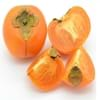Health Benefits
Cancer prevention, Cures gastro-intestinal troubles, Heart care, Increase in haemoglobin, Prevents diabetes
Arthritis treatment, Cancer prevention, Increases metabolic rate, Kidney stone treatment, Lower blood pressure, Prevents constipation, Prevents diabetes, Strengthening of bones, Ulcer treatment, Weight loss properties
General Benefits
Anti-inflammatory properties, Boosts immune system, Digestive aid, Eye care, Flu treatment, Helps in weight loss, Maintains healthy cholesterol level, Treatment of common cold
Boosts immune system, Controls blood pressure, Digestive aid, Improves eye vision, Maintains healthy cholesterol level
Skin Benefits
Anti-aging benefits, Brightens and lightens complexion, Reduces wrinkles, Skin revitalization, Treatment of dark spots
Anti-aging benefits, Brightens and lightens complexion, Hydrates skin, Skin rejuvenation, Treatment of acne, Treatment of dark spots
Hair Benefits
Prevents hair loss, Promotes longer and healthier hair, Protects hair, Remedy for split ends, Treatment of dandruff
Good conditioner, Prevents hair loss, Regulates hair growth, Treatment of dandruff
Allergy Symptoms
Abdominal pains, Anaphylaxis, Vomiting
Abdominal pains, Breathing difficulty, Coughing, Diarrhea, Drop in blood pressure, Fainting, Runny nose, Skin rash, Sneezing, Swelling of mouth, tongue or lips, Vomiting
Side Effects
Allergic reaction
Abdominal cramps, Diarrhoea, Weight gain
Best Time to Eat
As a snack in the late afternoon, Eat the fresh ones, avoid mixing with any other foods, don't eat after meal., Morning time (before lunch)
As a snack in the late afternoon, Don't consume at night and before bed, Eat the fresh ones, avoid mixing with any other foods, don't eat after meal., Morning time (before lunch), Strictly avoid empty stomach
Vitamin B5 (Pantothenic Acid)
Vitamin C (Ascorbic Acid)
Vitamin K (Phyllochinone)
Phytosterol
Not Available
Calories in Fresh Fruit with Peel
Calories in Fresh Fruit without Peel
Not Available
Varieties
Victoria, President, Czar, Ariel, Avalon and Oullins Gage
Sweet Orange - Persian orange, Navel orange, Valencia orange and Blood orange. Sour Orange - Seville orange, Bergamot orange, Chinotto orange and Daidai.
Color
Pink, Purple, Red
Orange
Inside Color
Yellow
Orange
Taste
Juicy, Sweet, Tart
Sweet-Sour
Origin
Caucasus
South-Eastern Asia
Soil Type
Clay, Loam, Sandy loam
Loam, Sandy loam
Climatic Conditions
Cold
Hot
Facts about
- In china, plums are used for production of wine.
- A chemical called amygdalin found in plum seeds, turns into toxic compound in human body.
- Plum tree produces fruit 3-5 yrs after planting.
- There are around 600 varieties of oranges available worldwide.
- More than 1 plant can grow from a single orange seed.
- Orange and orange blossoms are a symbol of love.
- Orange tree is usually propagated by grafting.
Top Producer
China
Brazil
Other Countries
Bosnia, Chile, India, Iran, Italy, Romania, Serbia, Turkey, United States of America
China, Egypt, India, Italy, Mexico, South Africa, Spain, Turkey, United States of America
Top Importer
United Kingdom
Germany
Botanical Name
Prunus domestica
Citrus sinensis
Synonym
Not Available
Citrus aurantium L. var. dulcis
Subkingdom
Tracheobionta
Tracheobionta
Division
Magnoliophyta
Magnoliophyta
Class
Magnoliopsida
Magnoliopsida
Species
P. domestica
C. × sinensis
Generic Group
Rose
Citrus fruit
Compare Plum and Orange
It is important compare Plum and Orange as both the fruits have a different nutritional value. Their comparison can be done on the basis of their vitamin and mineral content, calories, benefits as well as characteristics, making it easier for us to choose the best fruit for our diet. Their general health benefits are as follows:
Plum Benefits: anti-inflammatory properties, boosts immune system, digestive aid, eye care, flu treatment, helps in weight loss, maintains healthy cholesterol level and treatment of common cold.
Orange Benefits: boosts immune system, controls blood pressure, digestive aid, improves eye vision and maintains healthy cholesterol level.
Fruits are also used as a remedy for various hair problems. The hair benefits of Plum are: prevents hair loss, promotes longer and healthier hair, protects hair, remedy for split ends and treatment of dandruff and hair benefits of Orange are: good conditioner, prevents hair loss, regulates hair growth and treatment of dandruff. Some fruits are known to cause allergic reactions. The allergy symptoms of first fruit are: abdominal pains, anaphylaxis and vomiting and the symptoms of second fruit are: abdominal pains, breathing difficulty, coughing, diarrhea, drop in blood pressure, fainting, runny nose, skin rash, sneezing, swelling of mouth tongue or lips and vomiting. Get sorted Plum vs Orange comparison with the help of fruit comparison tool by fruitvs.com.









